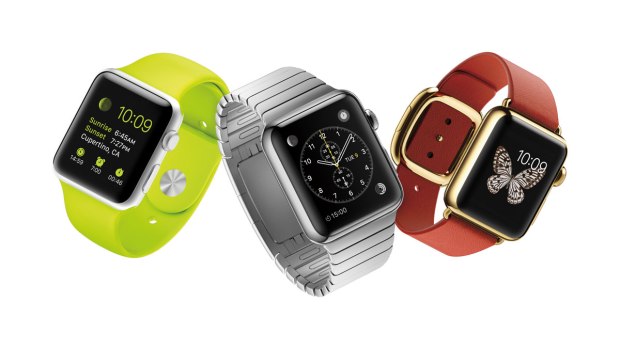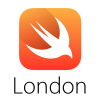Can you feel it yet?

This is a guest post by Boisy Pitre, Mobile Visionary and lead iOS developer at Affectiva. You can find him on Twitter here, and see his previous guest posts here.
It is the imminent release of Apple’s latest gadget-wonder… the long awaited Apple Watch. Announced last year, the wearable device is due to hit stores in a few months; its launch, sale price, and subsequent success or failure is the basis for immense speculation in and around the techno news websites and journals.
Last Fall’s announcement of the eagerly anticipated watch was true to Apple’s style of introducing something new: bold yet gentle, glamorous yet modest, confident yet demure. Touted as something truly personal to the wearer, the Apple Watch wooed and wowed the event’s audience and the wider general public. It was easy to see that this wasn’t just another technology device trying to act like a watch, but perhaps the very redefinition of the watch itself.
Predictably, it didn’t take long after the announcement for the questions to follow. How briskly will it sell? Who will buy it? And who wears a watch anymore?
What’s Old is New Again
The concept of wearable devices isn’t necessarily new; it’s been around for some time and has existed in various incarnations. Thinking back 15 years ago, I can distinctly remember attending PalmSource (yes, I’m talking about the Palm Pilot for those of you who can remember) in 2000, and witnessing an attendee walking around the show floor with Palm devices strapped to his forearms. It was reminiscent of Locutus of Borg in an episode of Star Trek: The Next Generation.
Thankfully, we’ve come a bit farther in style today. From arm bands with iPods to smartwatches like the Pebble and offerings from Samsung, you don’t have to look like a cyborg to have technology up close and personal to your body. And all indications are that with its myriad of colors, band styles, and body types, the Apple Watch will be as much of a fashion statement as a technology wearable.
Of course, as developers we are the spark and fuel that moves the pistons of Apple’s engines. Seeking new opportunities and pathways for our work is a constant motivation. So what does the Apple Watch mean for the developer?
A Totally New Platform
Just like the iPhone spurred the creation of the amazing “app economy” in 2008 with the release of the native iPhone SDK, the debut of the Apple Watch brings a whole new set of creative potential to the table. Although it has some utility on its own as a timepiece, where the Apple Watch really shines is its integration with the iPhone itself. The Apple Watch is really complete when it can pair up with an iPhone. The iPhone acts as a deliverer of both content and apps to the watch via Bluetooth. In essence, your Apple Watch becomes an extensible and conveniently accessible accessory to your iPhone.
This means if you have an iOS app already written, you can extend it to bring its functionality to the Apple Watch (assuming that there is some aspect of your app that makes sense appearing on someone’s wrist). Your iPhone is the “carrier” of the smarts that your Apple Watch will use; and in doing so, you have whole new ways to extend the usefulness of your iOS apps.
Think Different
A watch is not a phone, and a phone is not a watch. We carry our phones in our pockets and on our hips, but our watches adorn our wrists. As something that you will wear on your arm, the Apple Watch becomes a very convenient, immediate, and intimate place to view and interact with data. It opens up a whole new world of ideas for apps.
Not only is the Apple Watch as a platform more physically accessible, but its screen is considerably smaller in size than any previous iOS device. Given that the largest Apple Watch is 42mm tall (the other option is an even smaller 38mm in height), you have to carefully think about your app idea, and how it will “fit” onto such a targeted space.
The smaller design space of the Apple Watch, along with the intimacy and complete accessibility that it offers, is certain to inspire creative app extensions. It’s going to be interesting to see where developers will lay stake in this brave new world.
And It Will Get Better
Like all technology, the Apple Watch is bound to get “smarter” over subsequent revisions and generations. The perceived limitation of its tethering to the iPhone will become less and less pronounced, eventually to the point where Apple Watch may become a truly stand-alone, Dick Tracy type futuristic device. Think full audio and video interaction… a complete communications experience right on your wrist.
Challenges certainly remain to get there. Increased processing horsepower and capacity required to drive more features will require more battery life, and that will challenge Apple in interesting ways. There’s not a lot of room to put larger and larger batteries on your wrist.
Are You Ready?
Wearables are about to get a lot more popular, and the apps that will empower them are going to be more and more in demand. If you’re an iOS developer with an existing app, I encourage you to look at how your app might be able to augment your user’s experience on their wrist with their Apple Watch. Not all apps may be able to find that crossover, but many will, and with it will come the opportunity for you to become more familiar and close to your users.
 Are you interested in iOS development? Swift London is a group for iOS and OS X developers of all abilities who want to learn how to use it, who meet regularly at Skills Matter. You can join them for their next meetup on Tuesday 17 February – full details here.
Are you interested in iOS development? Swift London is a group for iOS and OS X developers of all abilities who want to learn how to use it, who meet regularly at Skills Matter. You can join them for their next meetup on Tuesday 17 February – full details here.
The organisers of the Swift London Meetup group have also put together an impressive line-up for a two-day Swift Summit which is taking place in London on 21 & 22 March. The programme includes speakers such as Chris Eidhof, Daniel Steinberg & Ayaka Nonaka. See the full agenda here.





